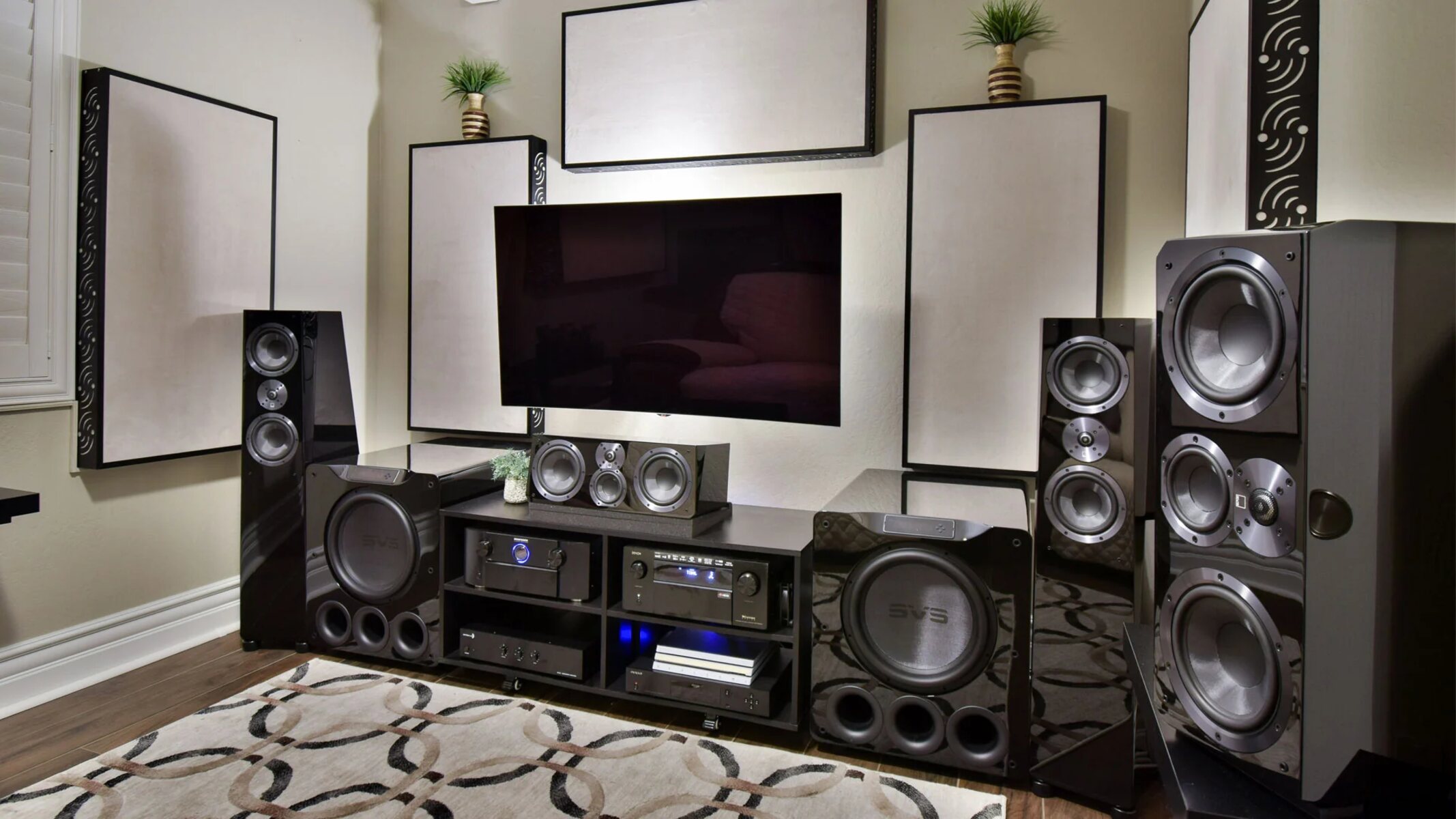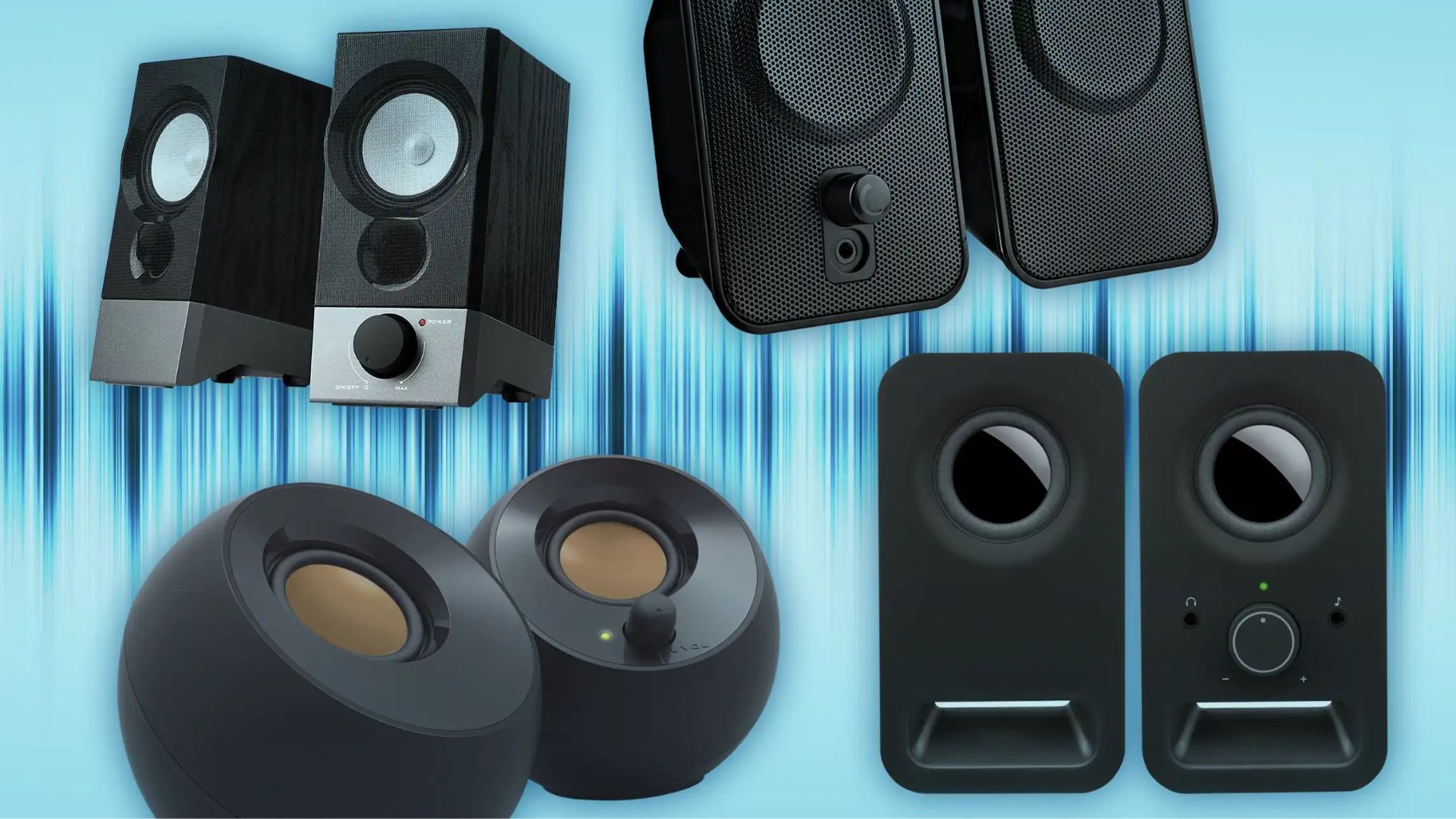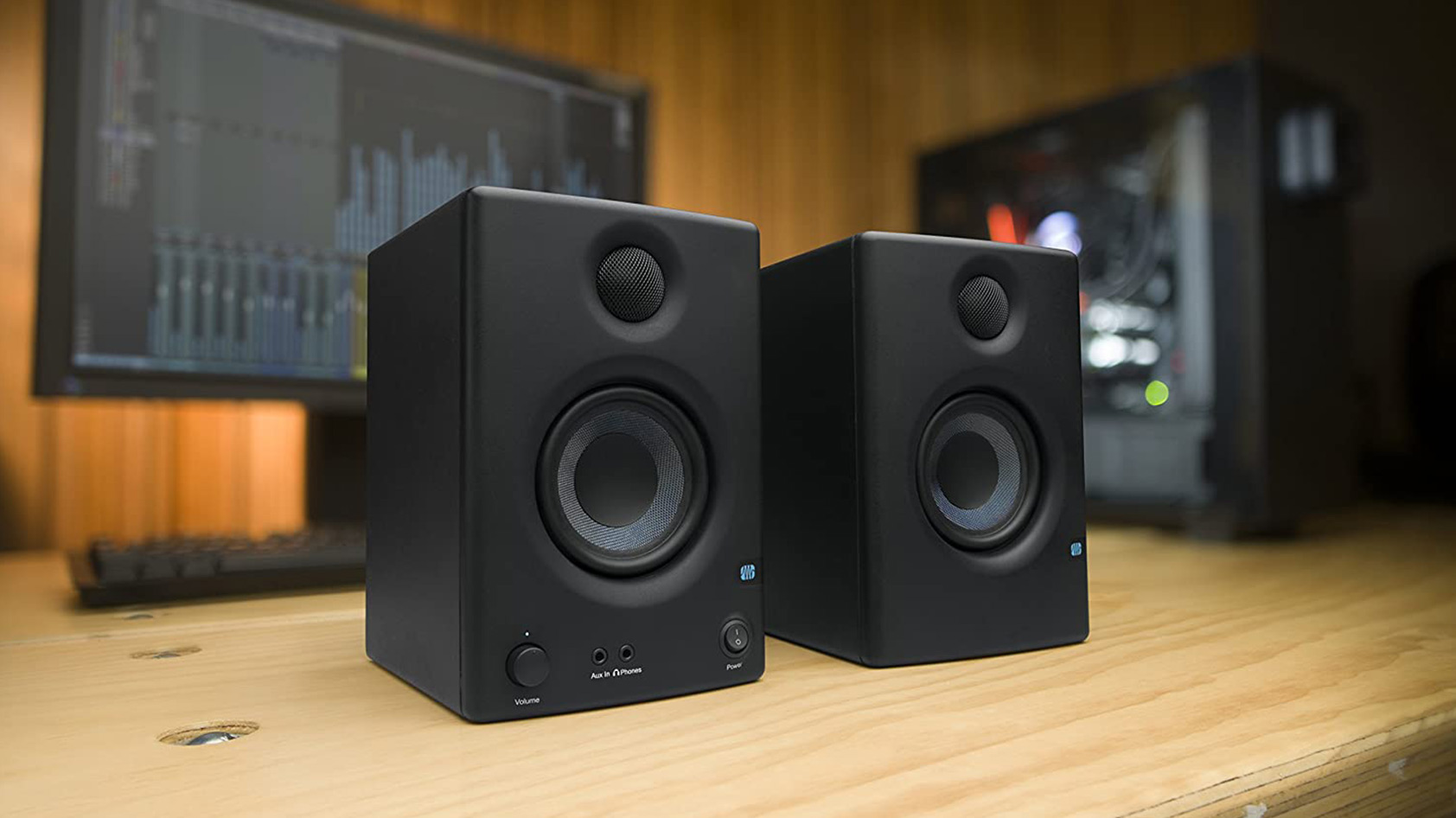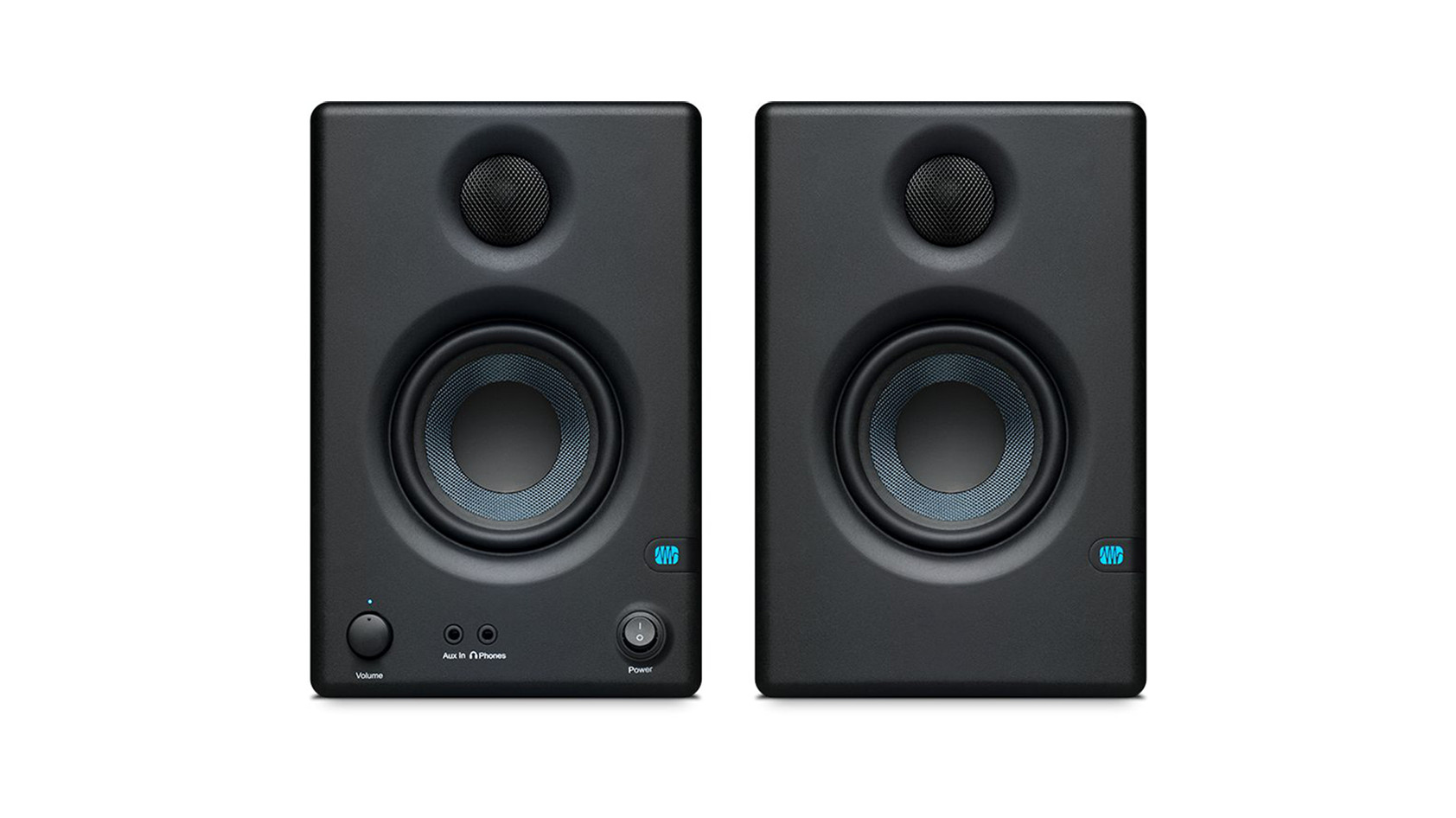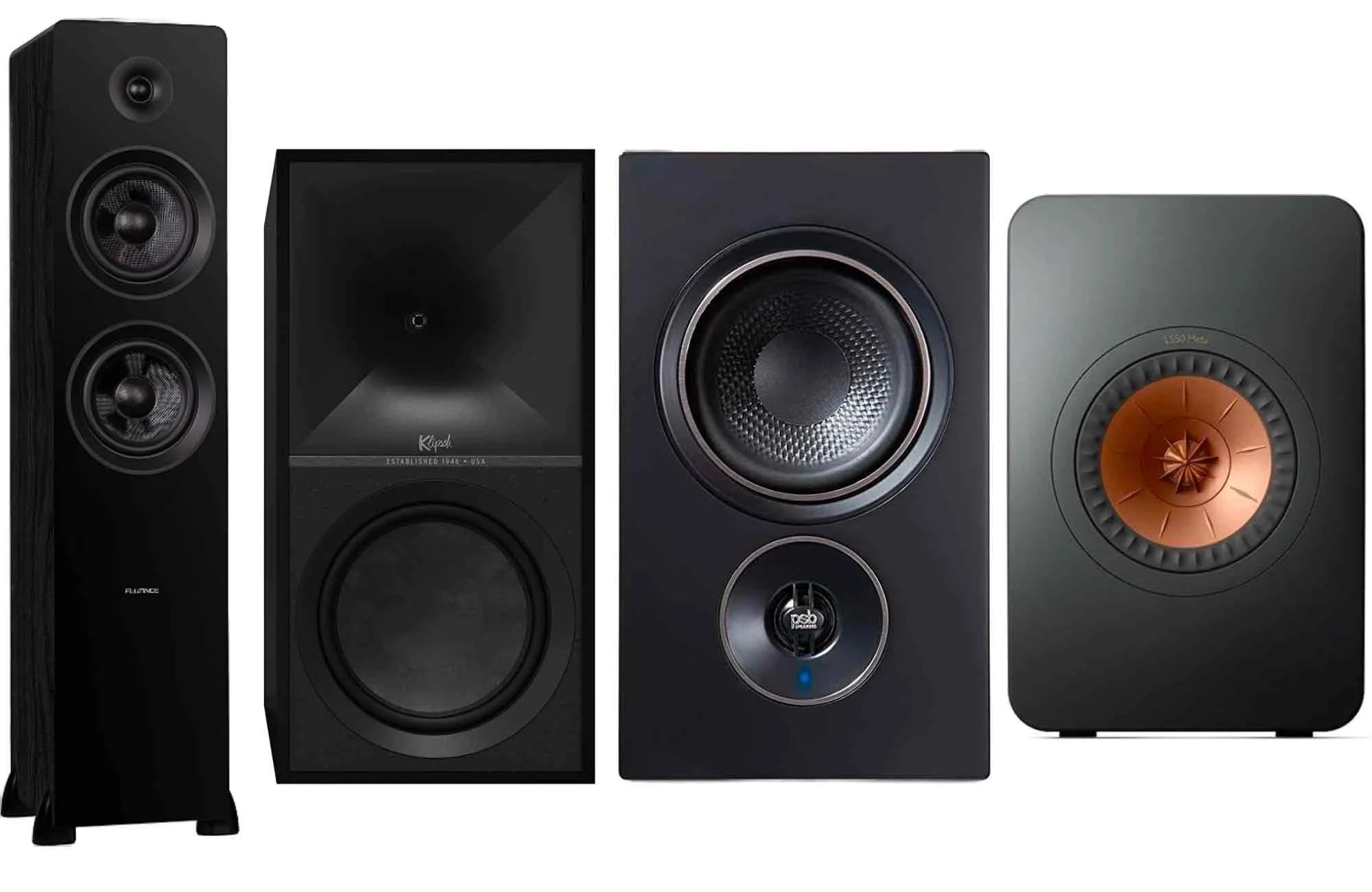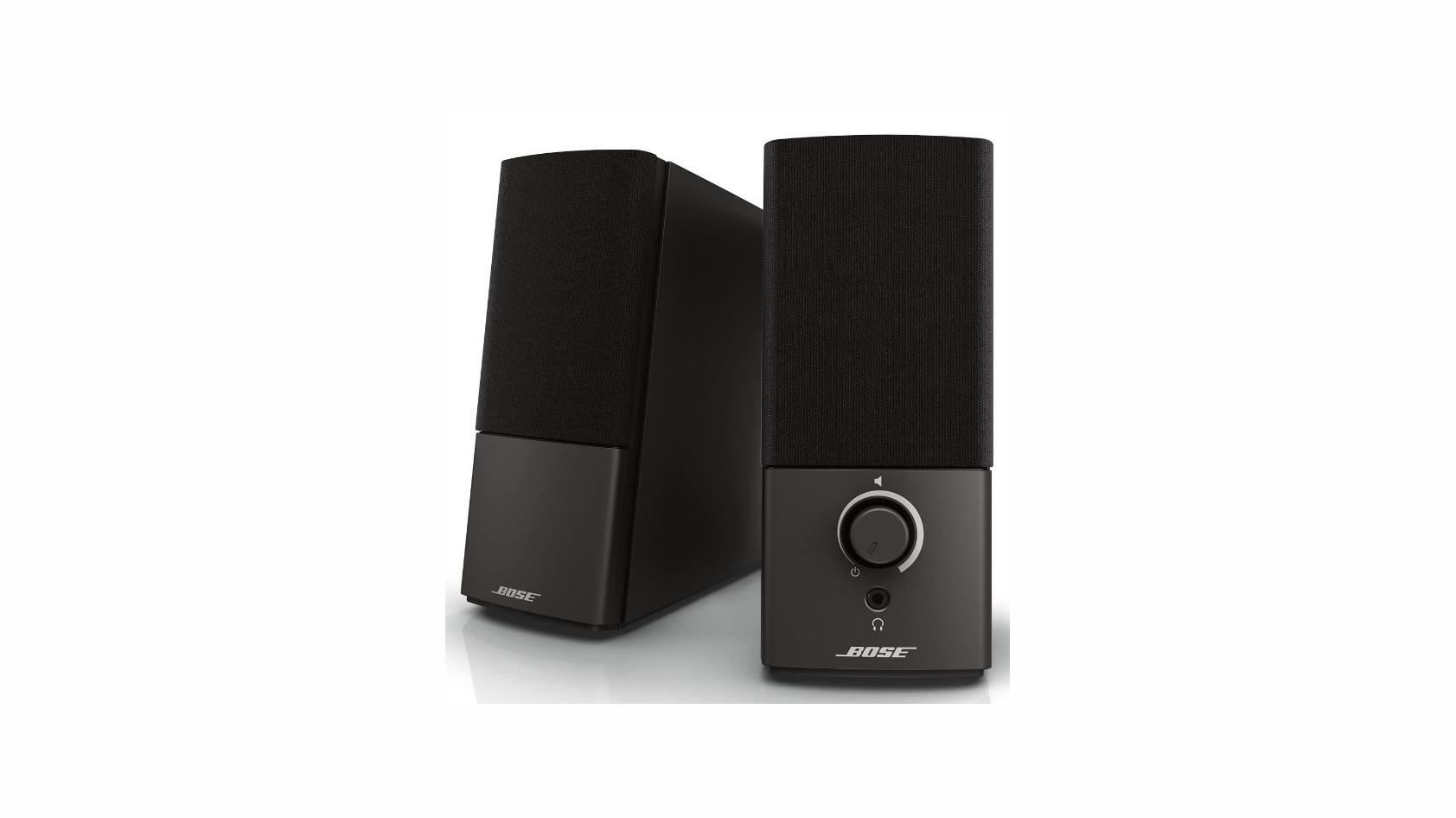Introduction
Welcome to the world of surround sound systems, where audio quality meets immersive experiences. Whether you’re a movie enthusiast, a music lover, or a gaming aficionado, having a quality sound system can make all the difference in enhancing your audio experience. A crucial component of any surround sound system is the speaker cables that connect the speakers to the audio receiver or amplifier. These cables play a vital role in ensuring the seamless transmission of audio signals to produce high-quality sound.
When setting up a surround sound system, you might have noticed that the speaker cables come in different colors. But have you ever wondered what these different colors mean? Is there any significance behind them, or is it simply a matter of aesthetics? In this article, we will explore the meaning behind the different colored speaker cables and highlight their importance in creating a well-connected and optimized surround sound setup.
Understanding the purpose and significance of speaker cables is essential for maximizing the audio performance of your surround sound system. By delving into the world of speaker cables, you’ll gain valuable insights that will help you make informed decisions when setting up or upgrading your home audio system.
So, grab your favorite beverage, sit back, and let’s embark on a journey to uncover the mysteries behind the different colored speaker cables in a desktop surround sound system.
Understanding Speaker Cables in a Surround Sound System
Before we delve into the meanings behind the different colored speaker cables, let’s first develop a clear understanding of what speaker cables are and their role in a surround sound system.
Speaker cables are electrical cables specifically designed for connecting the speakers to the audio receiver or amplifier. These cables are responsible for transmitting the audio signals from the receiver to the speakers, ensuring a clear and uninterrupted flow of sound.
When it comes to speaker cables, it is important to pay attention to their quality and construction. The thickness of the cables, known as the gauge, has a direct impact on the signal transmission and overall sound quality. Thicker cables generally have lower resistance and can handle higher currents, resulting in better audio performance.
Another crucial aspect to consider is the material used in the construction of the speaker cables. Copper is the most commonly used material due to its excellent conductivity. However, high-quality speaker cables may utilize other conductive materials such as silver or gold for even better signal transfer.
It’s worth noting that the length of the speaker cables can also affect the audio quality. Longer cables may introduce signal degradation and loss, so it is advisable to use the appropriate length of cable based on the distance between your audio receiver and speakers.
In a surround sound system, multiple speakers are strategically placed to create an immersive audio experience. Each speaker requires its own speaker cable to establish a connection with the audio receiver. Understanding the role of speaker cables and their importance in transmitting audio signals is crucial in optimizing the overall performance of your surround sound system.
Now that we have a solid understanding of speaker cables, let’s dive into the fascinating world of different colored speaker cables and uncover their meanings.
The Purpose of Speaker Cables
Speaker cables serve a vital purpose in a surround sound system by connecting the audio receiver or amplifier to the speakers. These cables are responsible for carrying the audio signals from the source to the speakers, ensuring the accurate reproduction of sound.
The primary function of speaker cables is to transmit electrical signals effectively and efficiently. They facilitate the transfer of audio signals from the audio source (such as a Blu-ray player, game console, or audio receiver) to the speakers, allowing the speakers to produce sound that is faithful to the original recording.
Speaker cables are designed to have low resistance, as this minimizes the loss of signal energy during transmission. By maintaining a low resistance, speaker cables help preserve the integrity of the audio signals, resulting in clearer, more detailed sound reproduction.
Another crucial aspect of speaker cables is their ability to handle the power requirements of the speakers. Different speakers have varying power demands, and the speaker cables must be able to effectively deliver the required power without compromising the quality of the audio signal.
It is worth noting that the length of the speaker cables can influence their performance. Longer cables may introduce additional resistance, leading to signal degradation and a loss of audio quality. Therefore, it is important to choose the appropriate length of speaker cables based on the distance between the audio receiver and the speakers.
Ultimately, the purpose of speaker cables is to establish a reliable connection between the audio source and the speakers. By ensuring a seamless transmission of audio signals, these cables play a crucial role in delivering an immersive and enjoyable audio experience in a surround sound system.
Identifying Speaker Cables by Color
When setting up a surround sound system, you may have noticed that speaker cables come in various colors. These colors serve a practical purpose and can help you easily identify and connect the right cables to the appropriate speakers and audio receiver.
The use of different colored speaker cables provides a visual cue that simplifies the setup process, ensuring that each speaker is connected correctly. By following the color-coded system, you can easily match the corresponding cable to its designated speaker terminal.
However, it’s important to note that there is no universal standard for the colors used in speaker cables. The color-coding system can vary between manufacturers, and it’s essential to refer to the specific documentation provided with your surround sound system or speakers to understand the meaning behind the different colors.
Typically, manufacturers adhere to a consistent color scheme to assist users in connecting their speakers effectively. While the exact color coding may differ, the most common colors used for speaker cables include red, black, green, blue, white, yellow, orange, and brown.
It’s important to keep in mind that the color of the cable does not affect the audio performance or quality. The color-coding is simply a visual aid to ensure proper speaker placement and connection.
During the setup process, it is recommended to carefully examine the markings on the audio receiver and speakers. These markings often indicate the corresponding color of the speaker cable to be connected. By matching the colors of the cables to the designated ports, you can avoid any confusion and ensure a seamless and accurate connection.
Remember, the goal of the color-coded speaker cables is to simplify the setup process and make it more user-friendly. So, whether you’re a seasoned audio enthusiast or a beginner setting up your first surround sound system, the color-coded system makes it easier for everyone to achieve optimal audio performance.
The Different Colored Speaker Cables and Their Meanings
While the exact meaning of colored speaker cables may vary between manufacturers and systems, here are common associations for different colors used in speaker cables:
- Red Speaker Cable: Red speaker cables are often used to indicate the connection for the right channel or the positive terminal on both the speakers and the audio receiver. The use of red color helps easily distinguish it from other cables.
- Black Speaker Cable: Black speaker cables are commonly associated with the left channel or the negative terminal. They are frequently connected to the corresponding terminals on the speakers and the audio receiver.
- Green Speaker Cable: In some systems, green speaker cables may be used for the rear surround speakers. It helps identify the specific role of these speakers in a surround sound setup, providing an immersive audio experience.
- Blue Speaker Cable: Blue speaker cables may be designated for the center channel speaker. The center channel is crucial for dialogues and sound effects in movies, ensuring clear and focused audio reproduction.
- White Speaker Cable: White speaker cables are often assigned to the front left and right speakers in a surround sound system. They help maintain consistency with the color-coded scheme and aid in efficient setup.
- Yellow Speaker Cable: Yellow speaker cables may be used for specific purposes, depending on the system or manufacturer. They can indicate connections for additional speakers such as height or overhead speakers, enhancing the immersive audio experience.
- Orange Speaker Cable: Orange speaker cables may be associated with specialized speakers such as subwoofers or dedicated low-frequency channels. The low-frequency effects provided by subwoofers enhance the bass and impact in movies and music.
- Brown Speaker Cable: Brown speaker cables could be used for different purposes depending on the system. They may indicate connections for secondary speakers or other specialized audio channels.
Remember, these color associations may differ between systems, so it’s always essential to refer to the specific documentation provided with your surround sound system or speakers for accurate information on the meaning of the colored speaker cables.
Understanding the meaning behind the different colored speaker cables is essential in ensuring that each speaker is correctly connected, resulting in optimal audio performance. By utilizing the color-coded system, you can easily identify and connect the right cable to the corresponding speaker terminal, simplifying the setup process and maximizing your listening experience.
Red Speaker Cable
The red speaker cable is one of the most commonly used colors in speaker cables, often representing the positive terminal or the right channel in a surround sound system. This vibrant color serves as a visual cue to indicate the correct connection for the right channel speakers, both on the speakers themselves and the audio receiver or amplifier.
By using red speaker cables, manufacturers make it easier for users to identify and properly connect the right channel speakers in their surround sound setup. This color consistency helps ensure a seamless and accurate audio experience.
When setting up your surround sound system, you can simply match the red-coded speaker cables to the designated red terminals on both the speakers and the audio receiver. It’s important to note that the red cable is typically assigned to the positive terminal, which ensures that the audio signal flows properly through the speaker without any phase issues.
Properly connecting the red speaker cable is essential for achieving balanced stereo imaging and accurate sound reproduction. Whether you’re watching a movie, listening to music, or gaming, ensuring that the right channel speakers are correctly connected with the red speaker cable helps maintain the intended audio experience.
Remember, while the red speaker cable is generally associated with the right channel or positive terminal, it’s crucial to refer to the documentation provided with your specific surround sound system or speakers for accurate information on the color coding to ensure proper connection.
So, when you see the red speaker cable, you can confidently connect it to the corresponding red terminals, knowing that you’re setting up your right channel speaker correctly. This simple but meaningful color coding helps take the guesswork out of the connection process, allowing you to focus on enjoying high-quality audio from your surround sound system.
Black Speaker Cable
The black speaker cable is another commonly used color in speaker cables, often associated with the negative terminal or the left channel in a surround sound system. This color coding helps users easily identify and connect the left channel speakers to the appropriate terminals on both the speakers and the audio receiver or amplifier.
By using black speaker cables, manufacturers provide a visual cue to indicate the correct connection for the left channel speakers, ensuring proper audio distribution in a stereo or surround sound setup.
When setting up your surround sound system, you can match the black-coded speaker cables to the designated black terminals on both the speakers and the audio receiver or amplifier. The black speaker cable is typically assigned to the negative terminal, ensuring that the audio signal flows correctly and maintains phase coherence.
Connecting the black speaker cable properly is crucial for achieving balanced sound and accurate audio reproduction. Whether you’re watching movies, listening to music, or enjoying gaming soundtracks, ensuring that the left channel speakers are correctly connected with the black speaker cable helps maintain the intended audio experience.
It’s important to note that in some systems or setups, the black speaker cable may also be used for grounding purposes. Grounding helps minimize potential noise or interference in the audio signal, resulting in cleaner and clearer sound reproduction.
Remember to consult the documentation provided with your specific surround sound system or speakers for accurate information on the color coding to ensure proper connection. While black is commonly associated with the negative terminal or the left channel, it’s always best to confirm the specific meaning behind the black speaker cable in your setup.
So, when you come across the black speaker cable, you can confidently connect it to the designated black terminals on your speakers and audio receiver, knowing that you’re setting up your left channel speakers accurately. This adherence to color coding simplifies the connection process, enabling you to enjoy immersive and well-balanced audio from your surround sound system.
Green Speaker Cable
The green speaker cable is occasionally used in surround sound systems and is typically associated with the rear surround speakers. This color coding helps users easily identify and connect the rear surround speakers to the appropriate terminals on both the speakers and the audio receiver or amplifier.
By using green speaker cables, manufacturers provide a visual cue to indicate the correct connection for the rear surround speakers, enhancing the immersive audio experience in a surround sound setup.
When setting up your surround sound system, you can match the green-coded speaker cables to the designated green terminals on both the rear surround speakers and the audio receiver or amplifier. This ensures that the audio signals are properly sent to the respective speakers, enveloping you in a surround sound field.
The use of green speaker cables for rear surround speakers allows for accurate placement and positioning of the speakers in your listening environment. The rear surround speakers play a crucial role in creating a sense of depth and ambient sound in movies, music, and gaming, enhancing the overall immersive experience.
It’s important to note that not all surround sound systems utilize green speaker cables for the rear surround speakers. The color-coding scheme may vary between manufacturers or systems, so it’s always advisable to refer to the specific documentation provided with your surround sound system or speakers for accurate information on the color coding.
So, when you encounter the green speaker cable, you can confidently connect it to the designated green terminals, knowing that you’re setting up your rear surround speakers accurately. This adherence to color coding simplifies the connection process, allowing you to enjoy the full enveloping audio experience that surround sound systems have to offer.
Remember, the use of green speaker cables may not be universal, so consult the documentation provided with your specific system to confirm the meaning behind the green cable and its association with the rear surround speakers. Whether it’s explosions in action movies or the atmospheric sounds of nature in documentaries, the accurate connection of the green speaker cables ensures that you’re fully immersed in the audio world of your favorite multimedia content.
Blue Speaker Cable
In some surround sound systems, the blue speaker cable is utilized to connect the center channel speaker. This color coding provides a visual cue to easily identify and connect the center speaker to the appropriate terminals on both the speaker itself and the audio receiver or amplifier.
The choice of using a blue speaker cable for the center channel signifies the importance of this speaker in a surround sound setup. The center channel is responsible for reproducing dialogue and sound effects, making it a crucial element in movies, TV shows, and other multimedia content.
When setting up your surround sound system, you can match the blue-coded speaker cable to the designated blue terminals on both the center channel speaker and the audio receiver or amplifier. This ensures that the audio signals intended for the center channel are accurately delivered, resulting in clear and focused dialogue reproduction.
The center channel speaker plays a vital role in creating a balanced and realistic soundstage, especially in movies where dialogue is prominently featured. By connecting the blue speaker cable to the center channel speaker, you ensure that voices and sound effects are accurately projected, enhancing the overall audio experience.
It’s important to note that not all surround sound systems adhere to the same color coding scheme, so it is always recommended to consult the documentation provided with your specific system to confirm the meaning of the blue speaker cable and its association with the center channel.
So, when you come across the blue speaker cable, you can confidently connect it to the designated blue terminals, knowing that you’re setting up your center channel speaker accurately. This adherence to color coding simplifies the connection process and allows you to enjoy the immersive audio experience that a well-balanced center channel brings to your favorite movies and TV shows.
Remember, each component of a surround sound system has a specific role, and the blue speaker cable ensures that the center channel speaker delivers crisp and intelligible dialogue. Regardless of whether you’re watching the latest Hollywood blockbuster or enjoying a gripping drama, the accurate connection of the blue speaker cable ensures that you never miss a word.
White Speaker Cable
In many surround sound systems, the white speaker cable is commonly used for the front left and right speakers. This color coding simplifies the setup process by providing a visual cue to easily identify and connect these speakers to the appropriate terminals on both the speakers themselves and the audio receiver or amplifier.
The use of white speaker cables for the front left and right speakers ensures consistency and clarity in the audio setup. These speakers are responsible for delivering the main audio content and contribute significantly to the overall balance and imaging of the surround sound system.
When setting up your surround sound system, you can match the white-coded speaker cables to the designated white terminals on both the front left and right speakers and the audio receiver or amplifier. This ensures that the audio signals intended for the front speakers are accurately transmitted, resulting in a well-defined stereo soundstage.
Properly connecting the white speaker cables to the front left and right speakers ensures that you experience audio as intended by the content creators and audio engineers. Whether you’re listening to music, watching a movie, or playing a game, the accurate placement and connection of the front speakers help deliver immersive and precise sound reproduction.
It’s important to remember that while white speaker cables are commonly associated with the front left and right speakers, the color coding scheme may differ between surround sound systems. It is always recommended to consult the documentation provided with your specific system to confirm the meaning behind the white speaker cable.
So, when you encounter the white speaker cable, you can confidently connect it to the designated white terminals, knowing that you’re setting up your front left and right speakers accurately. This adherence to color coding simplifies the connection process, allowing you to fully enjoy the immersive audio experience delivered by the front speakers in your surround sound system.
Remember, the front left and right speakers play a vital role in delivering audio across a wide soundstage, and the white speaker cable ensures that you experience the intended audio balance and imaging. Whether it’s the soaring vocals of your favorite song or the detailed sound effects in a movie, the accurate connection of the white speaker cable brings the audio to life right in your living room.
Yellow Speaker Cable
In some surround sound systems, the yellow speaker cable is utilized for specific purposes, depending on the manufacturer or system configuration. While the meaning behind the yellow speaker cable can vary, it is often associated with connections for additional speakers, such as height or overhead speakers.
By using the yellow speaker cable, manufacturers provide a visual cue to differentiate these specialized speakers from the primary front, center, and surround speakers in a surround sound setup. This color coding helps users easily identify and connect the additional speakers to the appropriate terminals on both the speakers and the audio receiver or amplifier.
When setting up your surround sound system, consult the documentation provided with your specific system to determine the meaning behind the yellow speaker cable. This will help you understand the intended purpose of the yellow cable and the corresponding speakers it is associated with.
The addition of height or overhead speakers in a surround sound system enhances the vertical dimension of the audio experience, creating a more immersive and enveloping soundstage. These speakers are crucial for reproducing audio elements such as rain falling from above, planes flying overhead, or a musician playing on an elevated stage.
When connecting the yellow speaker cable, ensure that you match it to the designated yellow terminals on both the additional speakers and the audio receiver or amplifier. This ensures proper transmission of audio signals to the height or overhead speakers, delivering an enhanced sense of audio depth and realism.
Remember, the use of yellow speaker cables for additional speakers may be specific to certain surround sound systems, setups, or specific manufacturer instructions. Always refer to your system’s documentation for accurate information regarding the meaning and purpose of the yellow speaker cable.
So, when you encounter the yellow speaker cable, carefully follow the instructions provided by the manufacturer to connect it to the appropriate terminals. This adherence to color coding ensures that you achieve the desired audio experience with additional speakers, whether it’s the sound of raindrops falling from above or the excitement of helicopters flying overhead, adding a new dimension to your surround sound setup.
With the accurate connection of the yellow speaker cable, you can immerse yourself in a truly 3-dimensional audio experience, heightening the realism and excitement of your favorite movies, music, and games.
Orange Speaker Cable
In some surround sound systems, the orange speaker cable is designated for specialized speakers, such as subwoofers or dedicated low-frequency channels. The use of orange speaker cables provides a visual cue to easily identify and connect these speakers to the appropriate terminals on both the speakers and the audio receiver or amplifier.
Subwoofers play a critical role in delivering low-frequency effects (LFE) in movies, music, and games. These speakers reproduce deep bass frequencies that add impact and depth to the overall audio experience. By utilizing the orange speaker cable, manufacturers ensure easy and accurate connection of the subwoofer to the audio system.
When setting up your surround sound system, consult the documentation provided with your specific system to confirm the meaning behind the orange speaker cable. This will help you understand the intended purpose of the cable and the appropriate connection to the subwoofer or low-frequency channel.
The orange speaker cable allows for the precise transmission of low-frequency signals, ensuring that the subwoofer accurately reproduces the bass and low-end effects present in the audio content. By connecting the orange speaker cable to the designated terminals, you can enjoy a rich and powerful low-frequency performance.
It is important to note that not all surround sound systems adopt the use of orange speaker cables for subwoofers. Therefore, it’s crucial to refer to the documentation provided with your specific system to confirm the assigned color for subwoofer connections.
So, when you come across the orange speaker cable, carefully connect it to the designated terminals, knowing that you’re setting up your subwoofer or dedicated low-frequency channel accurately. With the correct connection of the orange speaker cable, you can experience deep, booming bass and powerful low-frequency effects that will immerse you in your favorite movies, music, and games.
By adhering to the color coding scheme, you ensure that your subwoofer is seamlessly integrated into your surround sound setup, enhancing the overall audio performance and delivering a more thrilling and impactful listening experience.
Brown Speaker Cable
In some surround sound systems, the brown speaker cable may be designated for specific purposes, depending on the manufacturer or system configuration. While the meaning behind the brown speaker cable can vary, it often represents connections for secondary speakers or other specialized audio channels.
The use of brown speaker cables helps users easily identify and connect these secondary speakers or specialized audio channels to the appropriate terminals on both the speakers and the audio receiver or amplifier.
When setting up your surround sound system, consult the documentation provided with your specific system to determine the meaning behind the brown speaker cable. This will help you understand the intended purpose of the cable and the corresponding speakers or channels that it is associated with.
The specific use of brown speaker cables for secondary speakers or specialized audio channels may vary between systems. These speakers or channels may be additional rear or side speakers, dedicated height speakers, or any other configuration that complements the main surround sound setup.
By connecting the brown speaker cable to the designated terminals, you ensure that the audio signals intended for the secondary speakers or specialized audio channels are accurately transmitted and reproduced, enhancing the overall audio experience in your surround sound system.
It’s important to note that the meaning behind the brown speaker cable could differ in different systems or setups, so it is always advisable to consult the documentation provided with your specific surround sound system or speakers for accurate information on the color coding.
So, when you encounter the brown speaker cable, carefully follow the instructions provided by the manufacturer to connect it to the appropriate terminals. This adherence to the color coding ensures that you achieve the desired audio experience with the secondary speakers or specialized audio channels, complementing the main surround sound setup.
By properly connecting the brown speaker cable, you can enhance the depth, imaging, and realism of your surround sound system. Whether it’s the sound of instruments filling the room or the subtle ambient effects creating an immersive environment, the brown speaker cable enables you to fully enjoy the richness and complexity of the audio being produced.
Compatibility and Correct Connection of Speaker Cables
When setting up a surround sound system, ensuring compatibility and correctly connecting the speaker cables is crucial for optimal audio performance. Here are some important considerations:
1. System Compatibility: Before connecting your speaker cables, it’s essential to ensure that they are compatible with your audio receiver or amplifier. Check the documentation provided with your system to confirm the recommended cable gauge and any specific requirements regarding the use of certain colors or types of speaker cables.
2. Cable Length: The length of your speaker cables plays a role in maintaining optimal audio quality. Longer cables can introduce more resistance, leading to signal degradation. Avoid excess cable length by measuring the distance between your audio receiver and speakers, and choose cables accordingly. Shorter cables can minimize signal loss and help maintain audio integrity.
3. Correct Connection: Properly connecting the speaker cables is essential to achieve accurate audio reproduction. Match the designated colors of the cables to their corresponding terminals on both the speakers and the audio receiver or amplifier. This ensures that the audio signals flow correctly and speakers receive the appropriate channels.
4. Secure Connections: Ensure that the speaker cable connectors are securely attached to the terminals. Loose connections can lead to intermittent audio or distortion. Double-check that the connectors are in firm contact with the terminals, providing a reliable and solid connection.
5. Polarity and Phase: Pay attention to the polarity and phase when connecting the speaker cables. Typically, positive terminals are marked with a “+” sign, while negative terminals may be marked with a “-” sign or have a different color terminal. Maintaining correct polarity ensures that speakers produce sound in phase, resulting in a coherent and accurate audio image.
6. Cable Management: Proper cable management is not only aesthetically pleasing but also helps prevent accidental tripping or damage. Use cable clips, ties, or cable management systems to keep the speaker cables organized and out of the way. This promotes a clean and safe setup while also preventing potential interference or crosstalk between cables.
By paying attention to these compatibility and connection considerations, you can ensure a seamless setup and optimal audio performance from your surround sound system. Remember, always refer to the specific documentation provided with your system or speakers for precise instructions on cable compatibility and connection guidelines.
Take the time to set up your speaker cables correctly, and you’ll be rewarded with a stellar audio experience, whether you’re enjoying movies, music, or immersive gaming.
Conclusion
Understanding the meaning behind the different colored speaker cables is essential for setting up a well-connected and optimized surround sound system. The color-coded system simplifies the process of identifying and connecting the various speakers, ensuring accurate signal transmission and optimal audio performance.
Throughout this article, we explored the purpose of speaker cables and their significance in a surround sound system. We discussed how speaker cables transmit audio signals, handle power requirements, and contribute to overall sound quality. The proper connection of speaker cables is vital for achieving balanced sound reproduction and maximizing the potential of your speakers.
We also delved into the meanings behind the different colors used in speaker cables, such as red, black, green, blue, white, yellow, orange, and brown. While these color associations can vary between systems, they often represent the positive and negative terminals, primary speakers, rear surrounds, center channel, height, specialized speakers, and secondary speakers or channels in a surround sound setup.
It’s crucial to consult the documentation provided with your specific surround sound system or speakers to confirm the meaning behind the colored speaker cables in your setup. This ensures accurate connection and optimal utilization of your audio equipment.
Remember to consider compatibility and correct cable connection when setting up your surround sound system. Ensure that your speaker cables are compatible with your audio receiver or amplifier, use appropriate cable lengths, securely attach connectors to the terminals, maintain proper polarity and phase, and practice efficient cable management.
By adhering to these guidelines, you can create a well-organized and efficient audio setup that delivers immersive and high-quality sound.
So, whether you’re setting up a new surround sound system or upgrading your existing one, be mindful of the meanings behind the different colored speaker cables and their correct connection. By doing so, you’ll be able to unlock the full potential of your surround sound system and immerse yourself in captivating audio experiences.







